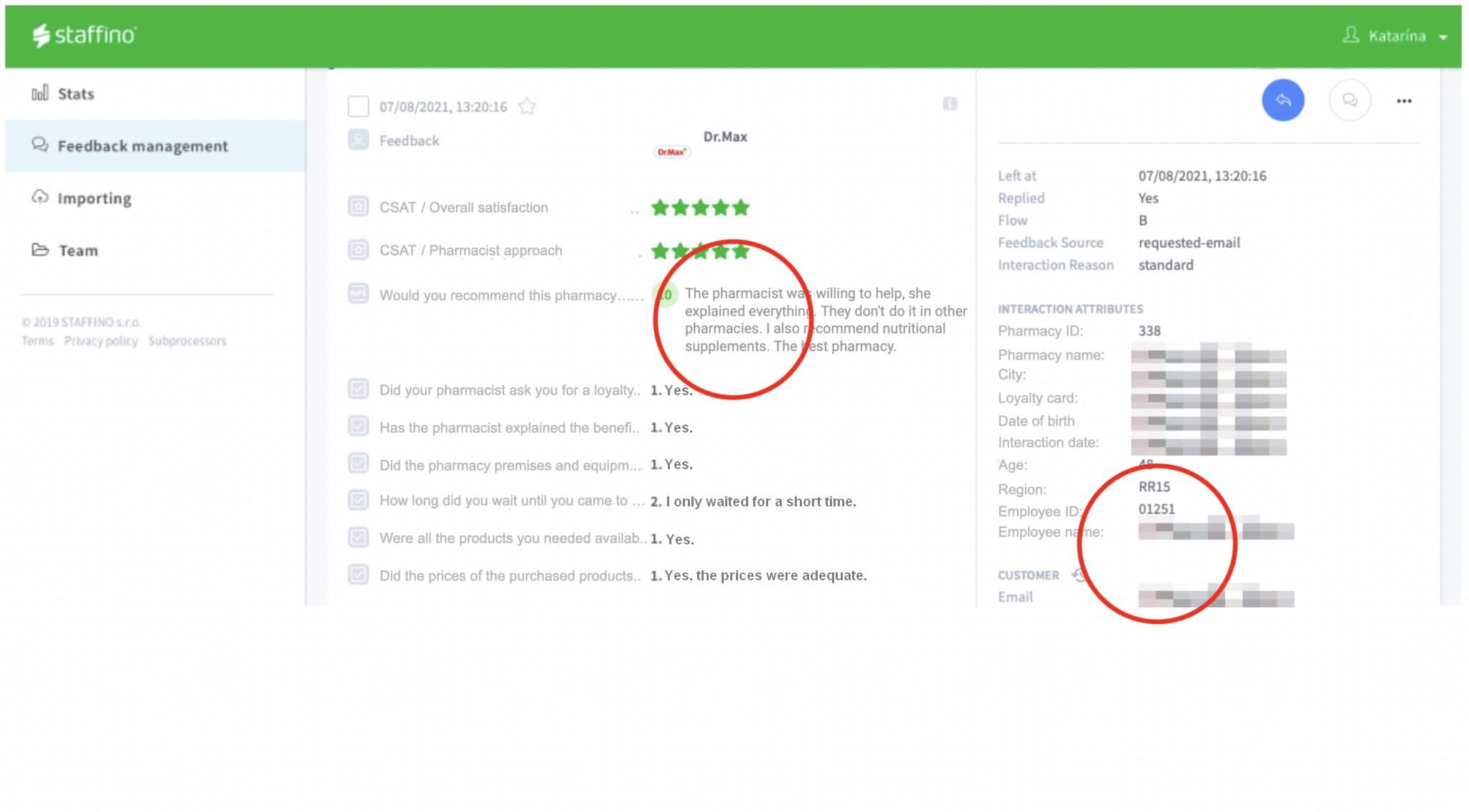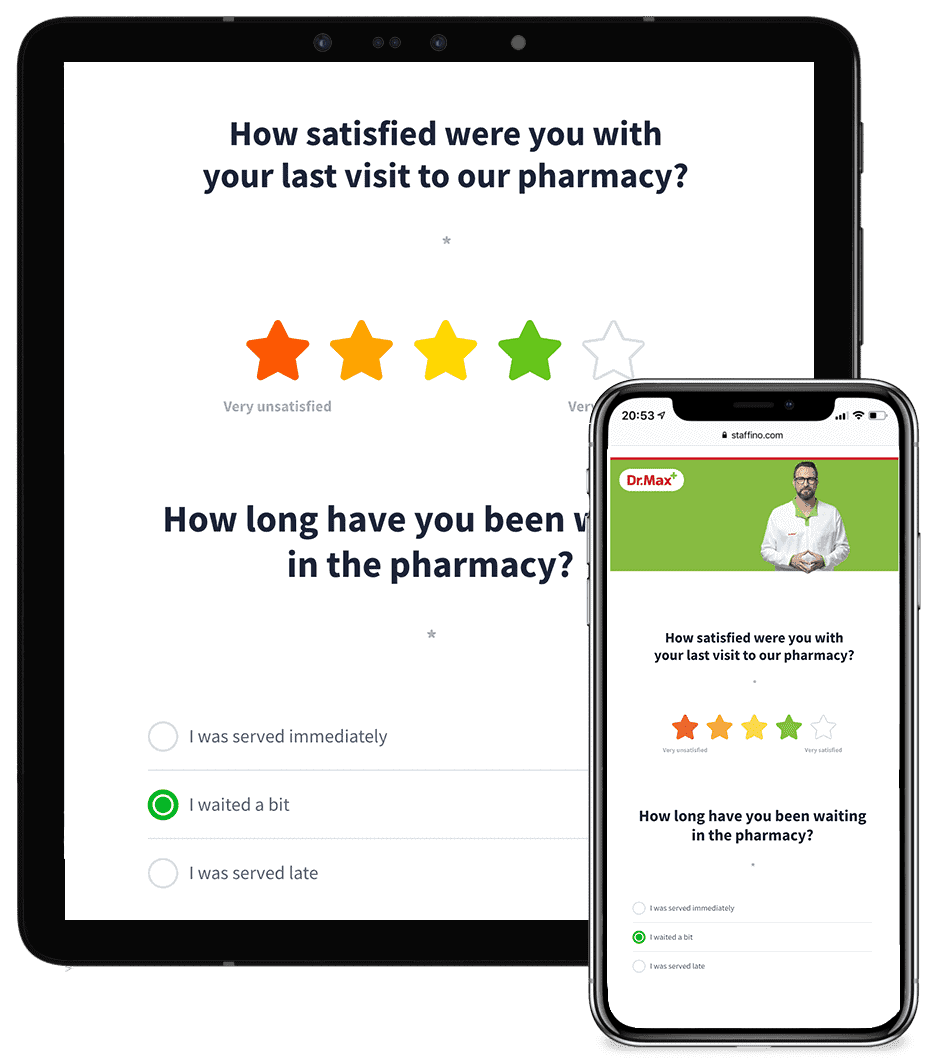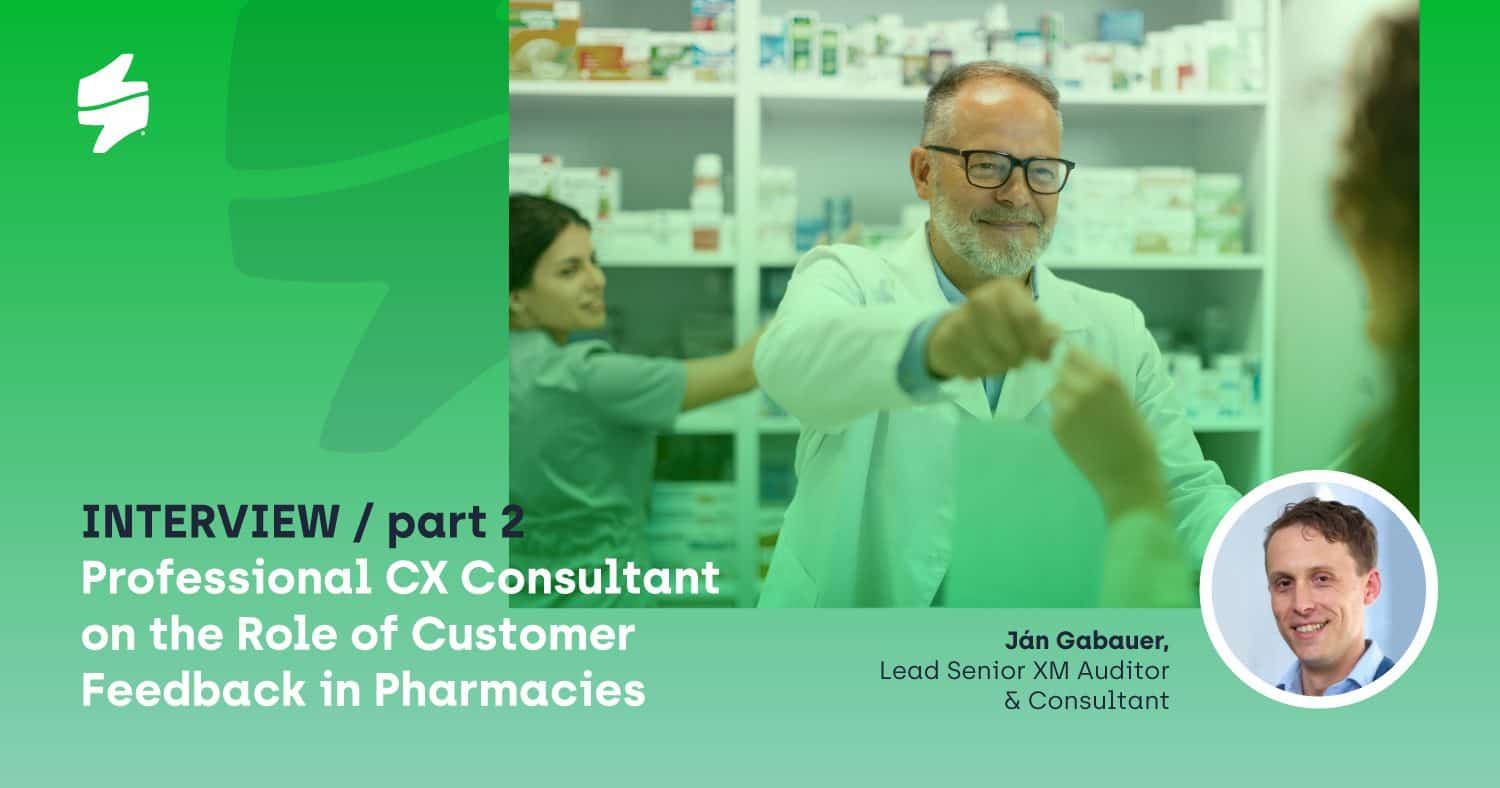Last month, we explored the profound significance of customer feedback within the pharmacy sector in PART 1 of this interview. Today, we continue our discussion with Ján Gabauer, a distinguished CX consultant renowned for his expertise in enhancing pharmacy customer service and driving revenue growth for leading European pharmacy chains.
In this second part, we delve further into the realm of pharmacy customer loyalty and the pivotal role that innovative CX solutions play in ensuring its attainment.
1. How can pharmacies encourage customers to provide feedback, and what strategies have you found to be effective in this regard?
There are several ways in which pharmacies can encourage customers to provide feedback. One effective method is by implementing a pharmacy loyalty program or similar incentives. This ensures that the pharmacy has the customer’s contact information, allowing them to send the feedback survey after the customer has shopped at the pharmacy. Additionally, providing customers with informative materials can help alleviate any concerns they may have about providing feedback.

It is also crucial for pharmacies to find the right partner to collect feedback and measure pharmacy customer satisfaction, ensuring prompt and pleasant engagement with customers. Moreover, it is important to focus on measuring only essential aspects of the customer experience. That means not asking the customer ten questions about the cleanliness of the store, the whiteness of the packaging, whether the pharmacist was wearing a name tag and other trivial matters. By prioritising important factors such as satisfaction with the pharmacist’s performance, addressing customer needs, and product availability, pharmacies can increase the likelihood of customers completing feedback questionnaires and utilising this opportunity in the future.

2. Are there any specific metrics or key performance indicators that pharmacies should focus on when analysing customer feedback?
As I mentioned, the key is always to identify the most important factors that influence pharmacy customer loyalty and overall satisfaction within a pharmaceutical business or during a visit to a pharmacy. For our clients, the key indicator is the NPS customer experience metric, which reflects pharmacy customer loyalty. This metric helps build a relationship with the customer and ensures that in the future, the pharmacy network focuses on that specific customer who will shop there regularly and seek out that particular pharmacy brand.

Regarding other attributes, the most important one will always be whether the customer is able to solve their request effectively. This means being able to purchase what they need in the pharmacy. Therefore, the attributes will include product selection and availability in the pharmacy.
Another key attribute is the behaviour of the pharmacist, whether they are polite and professional, provide advice to the customer, and offer additional products that the customer may not be aware of. We consider this upselling as a specifically measured attribute of customer care. You can read about the impact that improving the pharmacist’s approach can have on customer experience and revenue growth in our case study of the Dr.Max pharmacy chain.

It is also advisable to monitor how customers perceive the purchasing options within the brand online and how the waiting time affects their decision to wait in line and make a purchase.
3. How can pharmacies effectively address and resolve negative feedback from customers?
In the case of nationwide disruptions or the unavailability of specific medications, the only solution may be external assistance. It’s important for customers to understand that these issues are beyond the control of individual pharmacists or pharmacies. Generally, when negative feedback is related to a specific employee, it can be addressed through coaching schemes implemented by managers. The goal should be to eliminate any shortcomings and improve pharmacy customer service in the future with that particular pharmacist. It’s crucial for managers to identify individuals who may not provide adequate care to customers.

In general, it has been proven that when customers complain, it often just requires an explanation or an apology for the situation. If possible, it is advisable to close the feedback loop by contacting the complaining customer, either through pharmacy managers or designated customer care individuals who are empathetic and can handle such situations. In most cases, customers don’t expect any incentives or advantages but rather appreciate the company’s acknowledgement of their concerns and the responsiveness to their negative feedback. This alone can help change their perception and restore their satisfaction to a good level.

To effectively address negative feedback, it is important to have a robust CX program in place. This includes contacting customers with explanations, implementing coaching programs for pharmacists to improve their performance, and ensuring that these processes are consistently followed. Additionally, it is crucial to organise work effectively to reduce wait times in pharmacy and ensure product availability. These aspects are key to addressing negative feedback and improving overall pharmacy customer satisfaction.
4. What role does technology play in collecting and analysing customer feedback in the pharmacy industry, and what pharmacy customer feedback tool or platform do you recommend for this purpose?
Technology has revolutionised the way we collect feedback, making it incredibly convenient and efficient. Any system capable of detecting retail visits can be used, but when it comes to collecting feedback in the pharmacy sector, Staffino has gained significant expertise.
Some may argue that anyone can create a questionnaire and send it via email. Yes, even if we were to regress back to the Stone Age, I’m confident that surveys could still be conducted in some manner. However, nobody desires that level of inconvenience anymore.
Staffino is user-friendly and encompasses all the necessary features that pharmacy managers require for smooth and efficient feedback collection and analysis. Therefore, from this standpoint, Staffino is currently the go-to pharmacy customer feedback tool for managing patients’ customer experience.
Final Word
In conclusion, customer feedback is an essential component of success in the pharmacy industry. By implementing effective strategies that Ján described to encourage feedback, focusing on key metrics, addressing negative feedback, and utilising innovative technology, pharmacies can enhance patient loyalty and satisfaction, ultimately driving revenue growth.

Get a First-Hand Experience Today!
Staffino is the perfect tool for creating engaging surveys, tracking performance, responding to customer feedback, and rewarding top employees. Get started today with our FREE demo!









